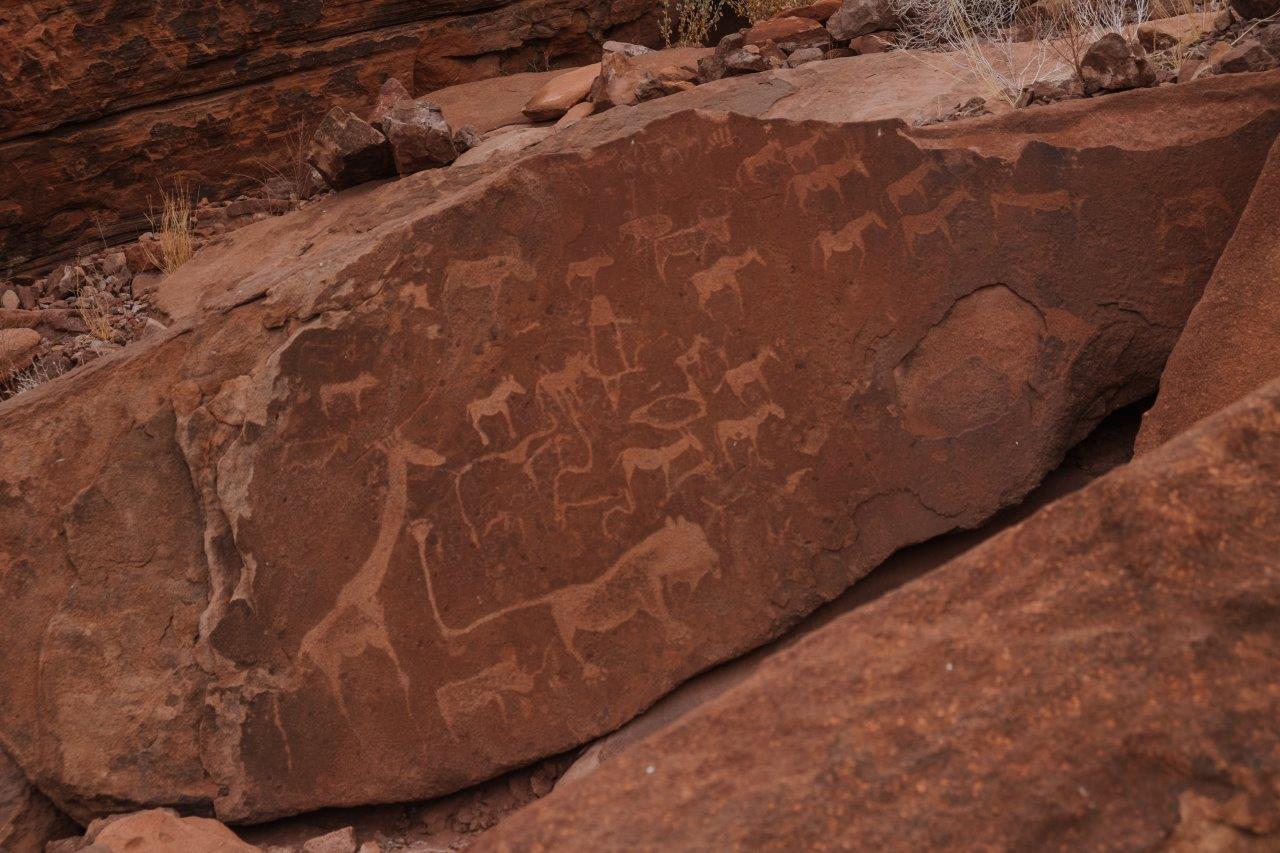
We traveled across Namibia for six days as part of a longer two-week cross-Africa roadtrip that would see us visit six fascinating countries. We had arrived in Windhoek on an early morning flight from Cape Town and within a few hours, our rented 4x4 truck was broken into and luggage was stolen. It was an unsettling feeling to starting the trip and as soon as we had filed a police report, we were desperate to get out of the city and into the wilderness of Namibia.
We started our massive adventure with a long drive into the red desert to visit the iconic landscapes of Sossusvlei and hike into the much-photographed clay pan of Deadvlei. We then drove north to Swakopmund, crossing the Tropic of Capricorn, commemorated with a sign, and signifying that we were now closer to the equator than the South Pole.
From Swakopmund, we packed up our roof tent and truck and headed inland towards the majestic Spitzkoppe, a collection of bald granite peaks, thought to be more than 120 million years old. The most symbolic of them all is the pointed triangular mountain rising more than 1700 metres high. The stunning red rocks make for an otherworldly landscape to explore and are home to stunning rock art, thought to have been painted over 2000 years ago by the local bushmen as they traveled through the region depicting their hunting and animal sightings.
Arrival to Twyfelfontein
After Spitzkoppe, we headed nearly 240km north to Twyfelfontein, a beautiful stretch of landscape at the end of another rough and sandy road that leads to a little haven in the desert. Twyfelfontein has numerous luxury lodges and safe little campsites, with a vehicle workshop and other amenities, all connected by a fresh new paved road and we thoroughly enjoyed our time here.

Spotted on the road to Twyfelfontein


A group of ostriches roadside
Camping in Tywfelfontein
Upon arrival in Twyfelfontein, we checked into the Twyfelfontein Campsite, a safe and spacious little spot nestled in the hills. There are some unmarked trails up into the hills behind the campsite, perfect for a late afternoon bushwhacking expedition offering stunning panoramic views across the landscape and the lonely road curving into the distance.


Visiting the Twyfelfontein Rock Carvings
The next morning, we arose early in our roof tent and drove down the sandy road to the home of the UNESCO Twyfelfontein Rock Carvings. We got a flat tire on the way, thankfully repaired by the nearby vehicle workshop (likely the only one for miles) and had to go to the nearby Twyfelfontein Country Lodge to get cash back as the UNESCO site doesn't take card payments but, we got there eventually.
The only way to visit the Twyfelfontein Rock Carvings are with a guide which is included in the entry fee. The excellent guides will take you on a 2km loop to visit the stunningly preserved rock carvings thought to be between 2000-6000 years old and depicting both what they saw in the area and on their nomadic travels. It was explained to us that some of the rocks were used as maps, some as warnings and some for educational purposes to teach the young.
The most famous carving in the area and in all of southern Africa is the lion-man, thought to be symbolic of the shaman: "representing the transformation of the shaman from man to lion in the spirit world, the lion is in fact represented with five fingers per leg, while in nature it has only four, and also the tail culminates at the end in a five-fingered hand." (from exploring-africa.com)

The educational board






The lion-man
CHECK OUT OUR VLOG OF NAMIBIA HERE!
PIN THIS POST TO REFER BACK TO LATER!


Hi! I’m Jana, a Dutch-German-British-Canadian with a dream of seeing every country in the world. I am a storyteller, photographer and adventurer passionate about documenting and sharing my travels.

Thank you for your wonderful description. To visit the Twyfelfontein Rock Carvings must one make reservations ahead of time for the guide?
Author
Thank you so much for your lovely comment! Glad you enjoyed the post. We didn’t book in advance, just showed up and joined the next tour group — they leave quite regularly 🙂
Thank you for responding so quickly! We’re looking forward to seeing this site for ourselves.